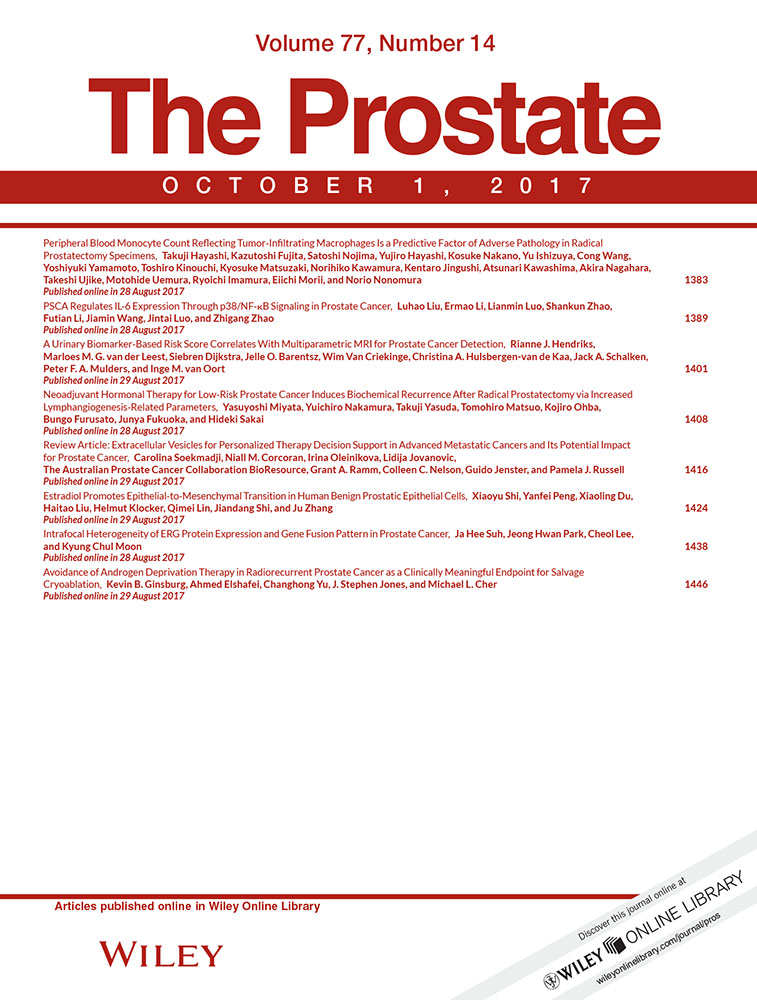Peripheral blood monocyte count reflecting tumor-infiltrating macrophages is a predictive factor of adverse pathology in radical prostatectomy specimens
Abstract
Background
Tumor-infiltrating macrophages, which are thought to be derived from blood monocytes, interact with tumor cells to promote cancer progression. The aim of this study was to assess the association of peripheral blood monocyte count with pathological findings and local tumor-infiltrating macrophages in prostatectomy specimens.
Methods
Preoperative peripheral blood monocyte counts were retrospectively assessed for their associations with pathological findings (pathological T stage, Gleason Score, extraprostatic extension, seminal vesicle invasion, and surgical margin) and biochemical recurrence of 248 patients who underwent radical prostatectomy. Local tumor-infiltrating macrophages were also evaluated immunohistochemically for their association with peripheral monocyte counts.
Results
The peripheral monocyte counts of the patients with extraprostatic extension, seminal vesicle invasion, or primary Gleason ≥4 were significantly higher than those of the patients without each of these pathological findings (P < 0.001, P = 0.034, and P = 0.004, respectively). Peripheral monocyte count was a significant predictor of adverse pathology and postoperative biochemical recurrence in localized prostate cancer by multivariate analysis (P = 0.001 and P = 0.041, respectively). Both the density and the count of tumor-infiltrating macrophages correlated significantly with the peripheral blood monocyte count (Spearman rank correlation coefficients were 0.463 and 0.649, respectively, P < 0.001).
Conclusions
Peripheral blood monocyte count reflecting local tumor-infiltrating macrophages was a predictive factor for tumor progression and prognosis in patients with localized prostate cancer. Elucidating the mechanism of the interaction of peripheral monocytes with tumor-infiltrating macrophages is necessary.




